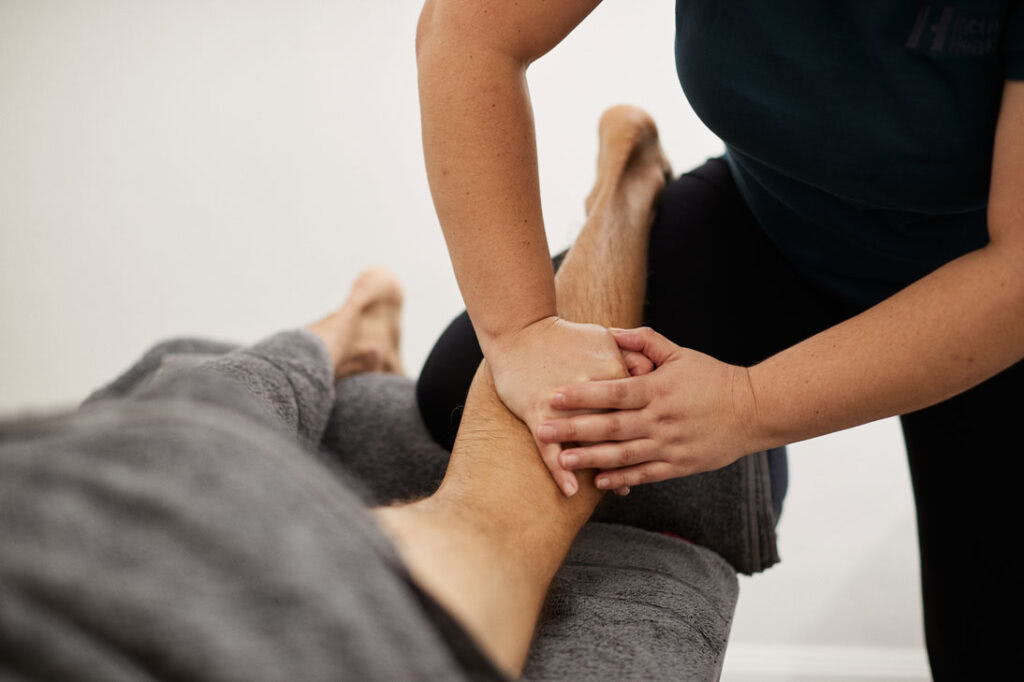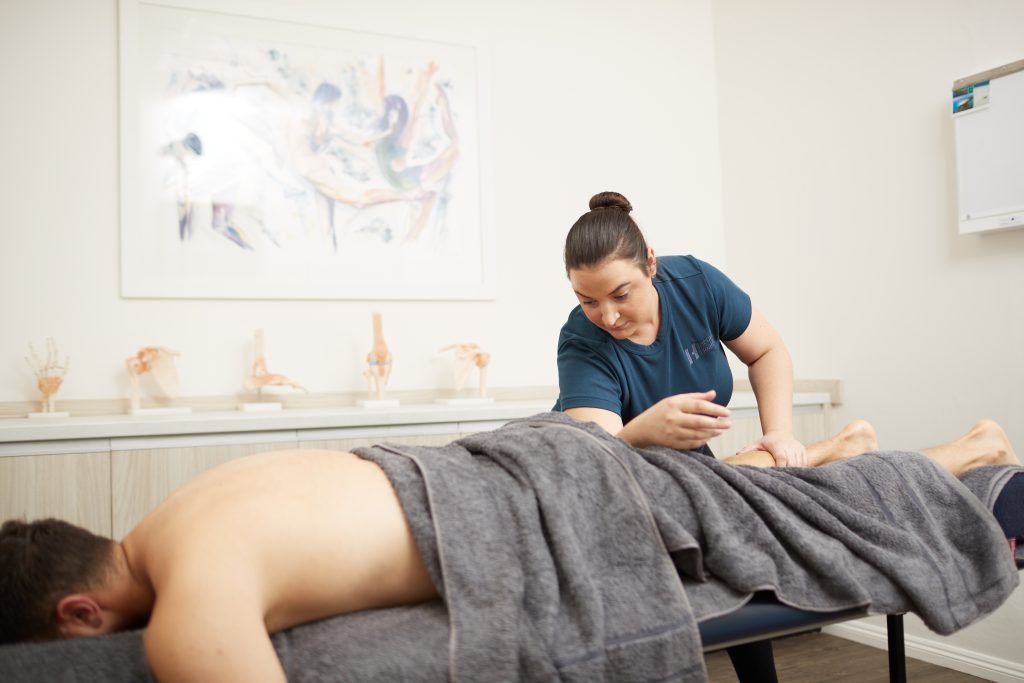Signs You Might Need a Deep Tissue Massage


Feeling Tense, Sore, or Just “Off”?
Sometimes, your body sends subtle (and not-so-subtle) signals that something’s out of balance—tight muscles, nagging pain, or even restless sleep. For many adults, juggling work, exercise, family, and stress, these signs can become the norm. But they don’t have to be, and prioritising your wellbeing can significantly improve your quality of life.
This article unpacks the most common signs you need a deep tissue massage and explains how this powerful technique supports recovery, pain relief, and overall wellbeing.
What Is a Deep Tissue Massage?
Not Your Average Spa Treatment
A deep tissue massage is a therapeutic technique that targets the deep layers of muscles and connective tissue.
It uses firm pressure in a sustained manner along with slow strokes to break down adhesions (knots), improve circulation, and reduce chronic tension.


How It Differs from Swedish Massage
While Swedish massage is typically gentle and aimed at relaxation, deep tissue work is more focused and intense.
It’s designed for addressing chronic issues like persistent pain, restricted movement, and injury recovery rather than simply unwinding after a long day.
Deep Tissue Massage Benefits at a Glance
- Relieves chronic muscle pain
- Improves posture and range of motion
- Boosts circulation
- Aids in injury rehabilitation
- Reduces stress hormones
- Supports better sleep
Top 10 Signs You Might Need a Deep Tissue Massage
1 – Persistent Muscle Pain or Stiffness
Are you constantly rubbing your shoulders or stretching your lower back?
Muscle tension—especially in the neck, shoulders, and lumbar spine—can stem from poor posture, repetitive motions, or overuse. Deep tissue massage penetrates tight muscle fibres and helps to alleviate tension, relieving the underlying tension causing that aching pain.
Tip: If you’ve tried stretching or foam rolling with little relief, a deep tissue session could be the reset your body needs.
2 – Limited Range of Motion
Struggling to turn your head fully or squat properly?
Tight fascia (the connective tissue surrounding muscles) and muscle knots can restrict mobility in joints like hips, shoulders, or the neck.
Deep tissue massage loosens these restrictions and promotes greater flexibility and fluid movement, enhancing athletic performance .
3 – Poor Posture or Desk-Related Discomfort
Sitting at a desk all day? You’re not alone.
Forward head posture, rounded shoulders, and tight hip flexors are common issues among office workers. These postural imbalances can lead to chronic neck and back discomfort.
A session with a licensed massage therapist can help realign muscle groups, release tension from prolonged sitting, and improve posture.


4 – You’re Recovering From an Injury
Healing after a sprain, strain, or surgical procedure?
Deep tissue massage supports rehabilitation by breaking down scar tissue, increasing blood flow to damaged areas, and preventing the buildup of stiffness or adhesions.
Always consult with your healthcare professional to determine the right timing for deep tissue massage in your recovery process.
5 – Chronic Headaches or Tension Headaches
Head pounding by lunchtime?
Headaches often originate from tight muscles in the neck, shoulders, and upper back. Trigger points—hyperirritable spots in muscle tissue—can refer pain upward.
A skilled therapist can identify and release these points, offering profound relief from recurring headaches.
6 – High Levels of Stress or Anxiety
Feel like you’re carrying the weight of the world in your shoulders?
Chronic stress activates the sympathetic nervous system, leading to muscle tightness, shallow breathing, and elevated cortisol.
Deep tissue massage promotes parasympathetic activity, thereby enhancing your physical health and mental well being by reducing stress hormones, calming the mind, and relaxing the body.
7 – You’re an Athlete or Fitness Enthusiast
From runners to weekend warriors, performance takes a toll.
High-intensity training can lead to micro-tears, tight fascia, and trigger points.
Regular deep tissue massage helps athletes prevent overuse injuries, shorten recovery time, and improve training results by increasing circulation and muscle repair.
8 – Poor Circulation or Cold Extremities
Notice your hands or feet often feel cold?
Circulatory issues can be linked to tight muscles restricting blood flow. Deep tissue massage stimulates healthy circulation, enhancing blood flow and helping oxygen and nutrients reach tissues more efficiently. This can lead to improved warmth and healing capacity in your limbs.
9 – Trouble Sleeping Due to Pain or Discomfort
Is discomfort waking you up at night?
Pain can disrupt your sleep cycle, leading to fatigue and irritability. Deep tissue massage helps with pain management, relieve pain, calm the nervous system, and reduce inflammation, particularly beneficial for those experiencing prolonged muscle soreness —supporting deeper, more restorative sleep.
10 – Previous Massages Didn’t Seem “Deep Enough”
Still feeling tension after your last massage?
If Swedish or relaxation massage left you wanting more relief, it might be time to escalate to a therapeutic deep tissue massage.
A session with a professional massage therapist using this technique goes beyond surface relaxation to address the root of chronic pain and tightness.
How to Know If You Need a Massage
Still unsure if deep tissue massage is right for you? Ask yourself:
- Do I have ongoing muscle or joint discomfort?
- Am I constantly stretching or self-massaging without results?
- Do I sit or stand for long hours daily?
- Have I experienced physical trauma or repetitive stress?
If you said yes to any of the above, your body could benefit from deep tissue therapy.
When to Get a Deep Tissue Massage
Frequency Matters
Depending on your lifestyle, stress levels, and physical condition, weekly or fortnightly sessions may be ideal. Athletes or those in rehabilitation might need more frequent care, while others can benefit from monthly maintenance.
Massage Therapy for Injuries: Proceed with Care
If you’ve had a recent injury or surgery, always check with your GP or physiotherapist before booking a massage.
Deep tissue massage is highly effective when timed correctly in the recovery process, addressing muscle adhesions, but can aggravate certain conditions if applied too early.
Deep Tissue Massage Is Essential for Sports Recovery


For athletes and fitness enthusiasts, sports massage, including deep tissue techniques, isn’t just a luxury—it’s an essential tool for maximising performance, preventing injury, and speeding up recovery. High-impact activities, intense training, and repetitive movement patterns can create muscle tightness, inflammation, and adhesions that limit movement and delay muscle repair.
Deep tissue massage targets these deeper layers of muscle and fascia, helping to flush out lactic acid, reduce delayed onset muscle soreness (DOMS), and improve oxygen delivery to fatigued tissues. This enhances recovery between sessions or competitions and helps maintain consistent performance.
It also plays a crucial role in injury prevention by addressing imbalances and compensation patterns before they turn into strains or tears. For athletes returning from injury, deep tissue work assists with scar tissue breakdown and increases joint mobility, supporting a safer, more efficient comeback.
Whether you’re training for a marathon, lifting heavy, or playing weekend footy, adding deep tissue massage to your recovery plan can make a noticeable difference in how your body feels—and performs.
Choosing a Qualified Massage Therapist
Deep tissue massage isn’t just about pressing harder. It requires in-depth anatomical knowledge of soft tissues , technique, and professional intuition.
What to Expect During a Session
- An intake discussion about your health history and problem areas
- Targeted work on knots, adhesions, or trigger points
- Occasional discomfort that should always remain tolerable
- After-care advice: hydration, stretching, and recovery tips
Who Should Avoid Deep Tissue Massage?
While highly effective, deep tissue massage may not suit everyone. Avoid or consult a health professional if you:
- Are pregnant (unless with a prenatal specialist)
- Using medication that is contraindicated
- Have blood clotting issues or are on blood thinners
- Have severe osteoporosis
- Skin conditions
- Have recent fractures or open wounds
Final Thoughts: Listen to Your Body
Your body talks—you just have to listen.
Whether it’s recurring back pain, nagging neck stiffness, or emotional burnout, these signs are your body’s call for attention.
A remedial massage, including deep tissue techniques, can do more than ease discomfort; it can also provide numerous physical benefits, restore balance, and promote healing from the inside out.
Ready to Feel Better?
If you’re noticing any of these signs, it may be time to book a session with a licensed deep tissue therapist near you.
Let our qualified massage therapists help you move and feel your best, especially if you make regular massage a part of your wellness routine .





